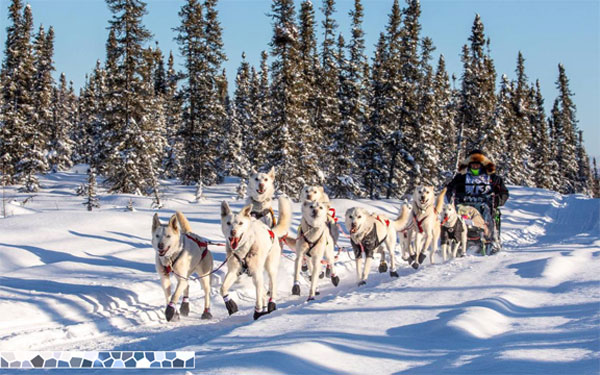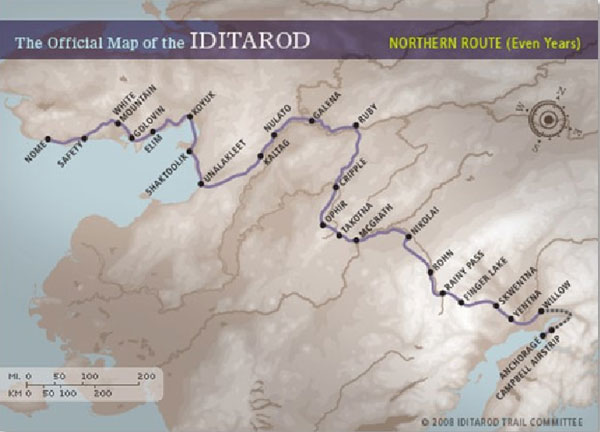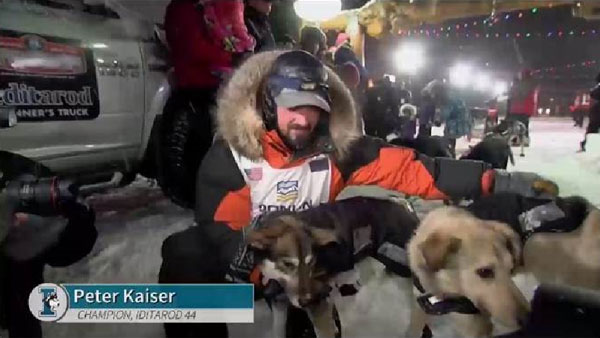 One important worldwide event *not* affected by Covid-19 is the 2020 Iditarod, which … starts tomorrow! One important worldwide event *not* affected by Covid-19 is the 2020 Iditarod, which … starts tomorrow!
The annual sled dog race from Anchorage to Nome is 1,000 miles through frozen wilderness, and it kicks off tomorrow with 57 teams competing.
About ten years ago my company Aperio invited musher DeeDee Jonrowe to speak at our annual sales meeting. She’s a cancer survivor and veteran Iditarod racer, and a wonderful speaker. I learned about mushing and the Iditarod, and became a fan. DeeDee retired a couple of years ago after 36 races, finishing in the top ten 16 times and 2nd twice. This year I'm rooting for Jim Lanier, a 79-year old former pathologist for Providence Health who has run the race 20 times. He’s known for having white dogs in his team; that’s them above right. Go Jim!
{Another thing about Jim, he wrote a book about mushing called Beyond Ophir which I highly recommend}
 Each musher starts with 14 dogs (yes you read that right, the rules have been changed, it used to be 16) and alternatively runs and rests for about nine days until they reach Nome, passing through 22 checkpoints along the way. The race alternates with slightly different routes in even and odd years; this year the race is taking the “Northern Route”, which is considered easier. Heh. Each musher starts with 14 dogs (yes you read that right, the rules have been changed, it used to be 16) and alternatively runs and rests for about nine days until they reach Nome, passing through 22 checkpoints along the way. The race alternates with slightly different routes in even and odd years; this year the race is taking the “Northern Route”, which is considered easier. Heh.
Most of the checkpoints are tiny native villages. Like the last two years there’s plenty of snow, in fact maybe too much; there is talk of snow drifts and banks and hidden trails. And many moose, who tend to like following the musher’s tracks and who can attack teams at any moment. Not to mention cold cold weather.
Like many endurance events, the Iditarod requires a lot of team strategy. Do you run fast and rest a lot, or run slow and steady? Do you run in the heat of the day (the dogs can overheat), or in the cool of the night, risking losing the trail or encountering moose? Do you stop in the checkpoints or camp in the wilderness? Feed lots of snacks often, or bigger meals at longer intervals? And do you go out fast and build a lead, or conserve strength and prevail in the end? It’s a lot of fun to watch it all play out.
 Last year we had a great two-up finish; after nine days the two leaders were just over a mile apart! Pete Kaiser ended up winning; that’s him with his lead dogs at right, having narrowly edged out defending champion Joar-Leifseth Ulsom. They're both back this year along with four other ex-champions. Last year we had a great two-up finish; after nine days the two leaders were just over a mile apart! Pete Kaiser ended up winning; that’s him with his lead dogs at right, having narrowly edged out defending champion Joar-Leifseth Ulsom. They're both back this year along with four other ex-champions.
The big story last year was Nic Petit; for the second year in a row he was leading the race coming out of Shaktoolik onto the ice of Norton sound, and for the second year in a row his team freaked out on the ice. After 12 hours of camping and trying to settle his team, he scratched. He’s back again too and it will be most interesting to see how he does out there.
I'll try to resist giving hourly updates, although in early March I do find myself checking the status of the race pretty often. I will keep you posted.
Cheers, and Go Jim!
| 



